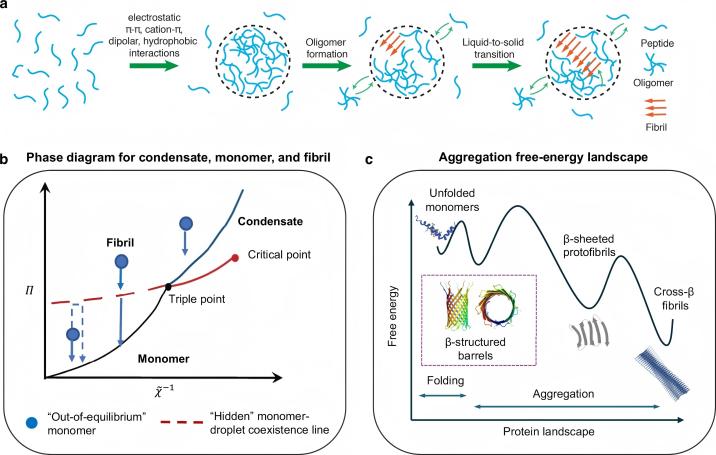The aggregation of soft matter involves delicate interactions at the atomic scale, and the aggregation process is characterized by complex structural transitions of soft matter. Despite the importance, the physical and mechanical principles of the aggregation of soft matter are still unclear. In recent years, the aberrant aggregation of soft matter has been continuously discovered, bringing new challenges to traditional theories and models of material aggregation.
To address this issue, the research team at Hohai University investigated the intrinsic connection between the liquid-liquid phase separation of soft matter and its aberrant aggregation. Based on the classic Flory-Huggins theory, liquid-liquid phase separation occurs when the concentration of soft matter exceeds a certain critical value, forming a demixing state where the high-density and low-density phases coexist. The concentration of soft matter increases in the high-density phase, where the high contact between soft materials reduces the energy barrier to form stable oligomers inside the condensates. Below the characteristic concentration, the aggregation of soft matter follows the classic nucleation-growth pathway. In contrast, above the characteristic concentration, the soft matter first forms droplet-like condensates through liquid-liquid phase separation, and then nucleation and growth proceed within the condensates, promoting the formation of fibrils. Additionally, by analogy to the gas-liquid phase transition, phase diagrams for soft matter monomer, condensate, and fibril states can be obtained. During the aggregation of soft matter, the energetically stable β-barrel structures can be observed. Moreover, experiments and molecular dynamic simulations found that the oligomers of soft matter can induce the rupture of intercellular connections, which further extended into cracks and induced leakage phenomena. These results can provide new insights into the relations between the aberrant aggregation of biological soft matter in the human body and various diseases.

The research titled 'Emerging biophysical origins and pathogenic implications of amyloid oligomers' was published in the journal Nature Communications. Huayuan Tang from the School of Mechanics and Engineering Sciences is the first author with Hohai University being the first affiliated institution. Collaborators include Professor Feng Ding from Clemson University, Professor Pu Chun Ke and Dr. Nicholas Andrikopoulos from Monash University, Professor Yunxiang Sun from Ningbo University, and Professor Yuhuan Li from Zhongshan Hospital affiliated with Fudan University. The research was supported by the National Natural Science Foundation project (12402237), and Jiangsu Provincial Natural Science Foundation (BK20241505).
Paper link: https://doi.org/10.1038/s41467-025-58335-y


